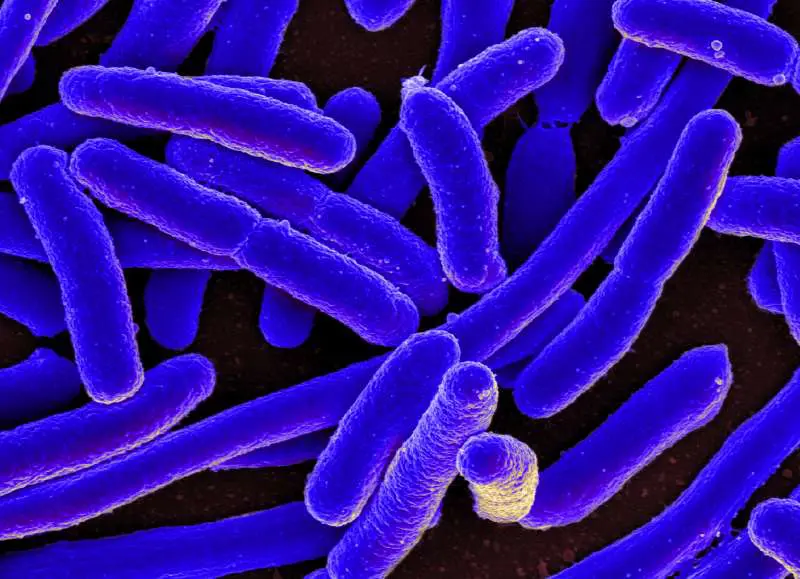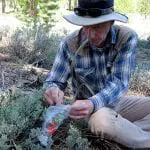Exponential Life – Epigenetics Deepens the Mystery of Design
I was blown away when the scientist said it; my mind yelled, “What? That’s crazy!” His topic was the famous, or maybe infamous, tiny friend living down in our lower digestive tract, Escherichia coli (E. coli) bacteria. He said that, on average, any given strain of E. coli shares about twenty percent of its core genes with any other E. coli -bacterial strain. In other words, about twenty percent of the E. coli genes are shared by all strains, but around eighty percent can vary throughout the species!*
One possible explanation for this phenomenon is that other information-carrying structures besides deoxyribonucleic acid (DNA) may partly define the E. coli’s final shape. This was startling news to me, for throughout my early biology education, I had understood DNA to be something like destiny.*
I had been taught that, like this sentence, DNA carries meaning and information. Many instructions for building a cell are stored within it, encoded in the sequence of nucleotide bases (represented by the letters A, C, G, and T) it contains. When a protein is needed, a copy, or transcription, of the relevant information in DNA is made out of another type of molecule, ribonucleic acid (RNA). The information in the RNA molecule, in turn, is translated into the final protein. This sequence of events, DNA to RNA to protein, is so foundational to biology that one of the co-discoverers of the DNA structure, Francis Crick, called it “the central dogma.”
The Cell’s Orchestra
But now I was discovering that DNA is not necessarily destiny. While DNA “sentences” are certainly essential for life, they are not sufficient to build an organism. So biologists today are asking whether the cell contains other vital receptacles of information.
For illustration, let’s picture an orchestra assembled to play a large-scale symphonic work. The piece is scored for many different instruments, some of which will be played continuously throughout the piece, while others will produce music only intermittently or for only a few measures. A successful performance of the piece, however, will depend upon all the instruments being played correctly and at the proper times.
So it is with the cell, the foundational unit of life. If we liken it to an orchestra, we can picture the DNA as the violin section—a central player, to be sure, but not (as was until recently believed) the whole orchestra. As vital as the violin section is, we cannot ignore the rest of the instruments in the orchestra. Nor can we ignore the other “instruments” in the cell—its other information-carrying structures. Collectively, these other information-bearing and directing structures are often called the epigenome. They are not part of the genome, but are above or external to the DNA genes.
The epigenome includes numerous different cellular elements. Some of them, called tags, attach themselves to both the DNA and surrounding structures, and act as switches. Others, such as the “scaffolding” in the cell, as well as the arrangement of the outer layers of the cells during the early stages of an organism’s life, help define cell structure and organization. Even sugar molecules on the cell surface carry information and are part of this epigenome.
Why the Epigenome Is Needed
As it turns out, the need for the epigenome has been known for some time. The human body consists of hundreds of different types of cells—blood cells, nerve cells, bone cells, skin cells, and so on. Moreover, as an individual grows from tiny zygote into full-fledged adult, he will require different variations of cells for each of the developmental stages. However, these cells must be produced according to precise “recipes” for certain specific stages but not for -others.
Yet all of the individual’s cells will always contain the same DNA code—that is, the same sequence of A, C, G, and T—regardless of what type of cell they are or what developmental stage the individual is in. So how does the DNA know the proper recipe for each type of cell, and what cells ought to be manufactured at the different life stages?
This is where the epigenome comes in. Think of the tag on your suitcase or a label on a package that gives instructions to the baggage handler or order processor. In like manner, chemical tags attach to genes and give them instructions.
Some of these epigenomic tags, including methyl and acetyl groups, ubiquitin, and other compounds, change the meaning of certain strands of DNA or determine how proteins are to lock and unlock specific lines of DNA code. Other tags are attached to proteins called histones, which act like spools that wind up and organize strands of DNA, controlling whether those strands will be read or copied. This process ensures that the correct sets of genes are activated or deactivated within specific cell types at the various developmental stages of an organism.
A Variety of Epigenomic Structures
In addition, other cellular structures, such as the microtubule organizing center (the centrosome), microtubules, and molecular motors, help define a cell’s function, structure, and shape. Cell division particularly illustrates this process. Molecular motors are activated by a structure called the kinetochore, a central structure on the chromosomes that acts as a signal-broadcasting system. During cellular reproduction, molecular motors “walk” towards the centrosome on microtubule scaffoldings, triggering a spectacular “tug-of-war” as the cell divides. Molecular motors have other functions as well, including delivering cellular packages to different locations per biochemical markers.
Sugar-containing molecules, which stud the cell’s surface, are also interesting. Called the “sugar code,” these patterns of sugary molecules carry and transmit information to and from other cells and the external environment. The sugar code is a high-density coding system, surpassing even DNA in its information-storing capacity. And just as the blade of a key is cut in a specific pattern to match the shape of the lock it is intended to open, so these arrangements carry specified complex informational patterns.
The “zygotic code” is another intriguing epigenomic feature. During an organism’s zygote stage, its outer layers, collectively called the cortex, contain a type of blueprint that helps arrange the maturing organism’s cell structure. Think of a map: the spatial location and structure of the various features depicted convey information even if no text is present. The map-reader can glean information about the rivers, roads, and so forth just by noting their shape and location on the map. In much the same way, the zygotic cortex guides an organism’s body-plan formation during its embryological development. Every structure in these outer layers of cells has a purpose in carrying information to define function and aid in development. For instance, certain cells contain whip-like structures called cilia. A parent cell’s cilia pattern helps define the next generation’s cilia pattern.
The Question of Source
While the epigenome’s structures and processes make for fascinating study, what is most curious is the origin of all this information. Methodological naturalism is a view that attempts to explain everything through the lens of materialistic processes. But such processes cannot account for the information within DNA and RNA. The source of that information has long posed a riddle for the materialistic worldview. The rise of epigenetics has exponentially complicated this riddle.
No wonder—information itself is immaterial, so how can strictly material processes account for it? They cannot: no known naturalistic cause can form large amounts of meaningful information. The mere action of molecules crashing against each other cannot form biological information any more than it can form mathematical equations or laws of logic.
Thus far, scientists have only scratched the tip of the iceberg when it comes to understanding the epigenome. The more we learn about it, the more preposterous becomes the idea that naturalistic causes could produce the specified complex information contained within the cells of living things. Intelligence is the only known source of such information. Thus, intelligence stands alone as the only plausible explanation for the genesis of biological information.
Is epigenetics new to you? If so, what did you find interesting here? If you knew about it before, can you add anything else? Tell us below!
This article first appeared in Salvo 35.
*Original wording “In other words, about eighty percent of its genome is different from that of any other strain!” And “This was startling news to me, for throughout my biology education, I had understood DNA to be something like destiny.”








What an interesting and educational article! I had never heard of epigenomes before, so this came as a complete surprise that DNA wasn’t the whole story behind our glorious body that Christ designed. The problems for evolutionists gets more and more difficult the more they delve into creation in their futile attempts to prove that all things developed through chance over billions of years.
Thanks for this article. Please write more!
Yosh Shimono
Thanks Yosh! Yes, there are real big problems with Darwinistic evolution, the whole field of information is showing that the most reasonable position is God was the creator! I do have more posts that I plan to add here, but in the mean time, feel free to check out http://www.ibiteblog.blogspot.com. I have a number of other posts on how biology points to a creator and other reasons for our faith.
Also, if you want to keep updated, sign up below on the “Creation Weekly” email news list. Also, feel free to subscribe to the latest posts at IBITE blog at the above site.
Awesome! What an amazing Creator we serve! Thanks so much for this edifying article!
Thanks Jennifer!